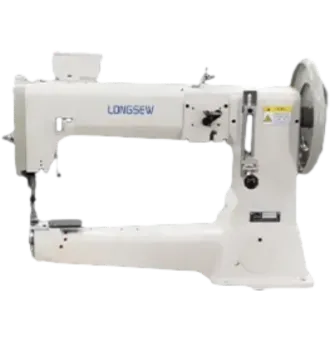Innovative Automation in Sewing Technology for Enhanced Efficiency and Precision
The Evolution of Auto Sewing Revolutionizing the Textile Industry
The world of textiles has undergone significant transformations over the centuries, but few innovations have been as impactful as the advent of auto sewing technology. Auto sewing, encompassing automated sewing machines and robotic sewing solutions, has revolutionized the garment manufacturing industry, enhancing productivity, consistency, and efficiency. This article explores the evolution of auto sewing, its benefits, challenges, and the future of this technology in the textile sector.
Historical Context
The journey of sewing machinery began in the early 19th century with the invention of the first sewing machine by Elias Howe and later improvements by Isaac Singer. These early machines mechanized the sewing process, allowing tailors to create garments faster and more accurately than by hand. However, it was not until the late 20th century that the concept of auto sewing, with automated processes and robotic assistance, emerged. This new phase marked a significant departure from traditional sewing techniques, transforming the way garments were produced.
Benefits of Auto Sewing
One of the primary advantages of auto sewing technology is its ability to significantly streamline production processes. Automated sewing machines and robotics can operate at speeds far surpassing human capabilities. This increase in speed translates to higher output, allowing manufacturers to meet growing consumer demands more effectively. Moreover, automated systems ensure uniformity and consistency in stitching quality, reducing the likelihood of defects and the need for rework.
Cost efficiency is another key benefit. Although the initial investment in automated sewing machinery can be substantial, it often pays off in the long run through reduced labor costs and increased production output. Manufacturers can scale their operations without a proportional increase in workforce size, contributing to a more sustainable business model.
Additionally, auto sewing technology enhances workplace safety. By automating repetitive and hazardous tasks, the risk of workplace injuries decreases. Workers can be reassigned to more complex and creative roles, fostering a more fulfilling work environment.
auto sewing

Challenges in Implementing Auto Sewing
Despite its many advantages, the implementation of auto sewing technology is not without challenges. One of the primary obstacles is the high initial cost of advanced machinery and software. Small and medium-sized enterprises (SMEs) may find it financially challenging to invest in such technology, which could lead to a widening gap between large corporations and smaller manufacturers.
Moreover, the transition from traditional sewing methods to automation requires a significant change in workforce skills. There is a growing need for skilled workers who can operate and maintain advanced machinery. Training and upskilling the existing workforce can be time-consuming and costly, yet it is essential for the successful integration of auto sewing technology.
Another concern is related to the environmental impact of increased production. While automated systems can reduce waste through precise cutting and stitching, the overall textile industry still grapples with issues of sustainability. As auto sewing machines become more prevalent, manufacturers must also adopt eco-friendly practices to minimize their environmental footprint.
The Future of Auto Sewing
Looking ahead, the future of auto sewing appears promising. Advances in artificial intelligence and machine learning are set to enhance the capabilities of automated sewing systems further. These technologies can enable machines to learn from previous work, adapt to new patterns, and even personalize garments based on customer preferences.
Additionally, the rise of on-demand production and customization will likely drive the demand for auto sewing solutions. Consumers increasingly seek unique and personalized products, pushing manufacturers to adopt agile production systems that can quickly respond to changing trends.
In conclusion, auto sewing technology has fundamentally transformed the textile industry, offering numerous benefits related to efficiency, quality, and safety. While challenges remain in terms of costs and workforce training, the future of auto sewing holds great potential for continued innovation and adaptation in an ever-evolving market. As technology progresses, the industry must embrace these changes to remain competitive and responsive to consumer needs.
-
Industrial Cylinder Arm Sewing Machine: Revolutionizing Heavy-Duty SewingNewsJul.28,2025
-
Cylinder Arm Sewing Machine: Perfect for Special Sewing ApplicationsNewsJul.28,2025
-
Cylinder Bed Sewing Machine: Essential for Sewing Complex MaterialsNewsJul.28,2025
-
Heavy Duty Sewing Machine: The Essential Tool for Industrial ApplicationsNewsJul.28,2025
-
Computerized Pattern Sewing Machine: Revolutionizing Precision StitchingNewsJul.28,2025
-
Heavy Duty Industrial Sewing Machine: Power Meets PrecisionNewsJul.28,2025
-
Leather Sewing Machine: The Industrial Standard for Tough MaterialsNewsJul.18,2025





























